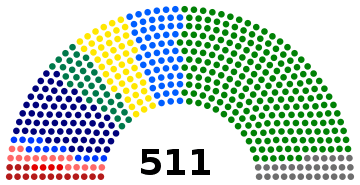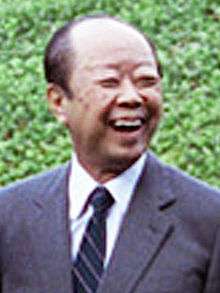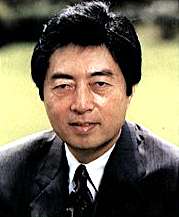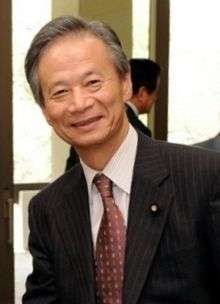Japanese general election, 1993
|
| |||||||||||||||||||||||||||||||||||||||||||||||||||||||||||||||||||||||||||||||||||||||||||||||||||||||||||||||||||||
| |||||||||||||||||||||||||||||||||||||||||||||||||||||||||||||||||||||||||||||||||||||||||||||||||||||||||||||||||||||
All 511 seats to the House of Representatives of Japan 256 seats needed for a majority | |||||||||||||||||||||||||||||||||||||||||||||||||||||||||||||||||||||||||||||||||||||||||||||||||||||||||||||||||||||
|---|---|---|---|---|---|---|---|---|---|---|---|---|---|---|---|---|---|---|---|---|---|---|---|---|---|---|---|---|---|---|---|---|---|---|---|---|---|---|---|---|---|---|---|---|---|---|---|---|---|---|---|---|---|---|---|---|---|---|---|---|---|---|---|---|---|---|---|---|---|---|---|---|---|---|---|---|---|---|---|---|---|---|---|---|---|---|---|---|---|---|---|---|---|---|---|---|---|---|---|---|---|---|---|---|---|---|---|---|---|---|---|---|---|---|---|---|---|
| Turnout |
67.26% ( | ||||||||||||||||||||||||||||||||||||||||||||||||||||||||||||||||||||||||||||||||||||||||||||||||||||||||||||||||||||
| |||||||||||||||||||||||||||||||||||||||||||||||||||||||||||||||||||||||||||||||||||||||||||||||||||||||||||||||||||||
| |||||||||||||||||||||||||||||||||||||||||||||||||||||||||||||||||||||||||||||||||||||||||||||||||||||||||||||||||||||
 |
|---|
| This article is part of a series on the politics and government of Japan |
|
Foreign relations |
|
|
Japan held a nationwide election to the House of Representatives, the more powerful lower house of the National Diet, on July 18, 1993.
Overview
Japan's relatively larger growth compared to other developed countries during the 80's that was the result of the real estate bubble had crashed and the 1993 election occurred at a time when the economy went into recession, dimming prospects for the ruling LDP. The consumption tax and the Recruit scandal as well, seriously affected the popularity of the long-time ruling Liberal Democratic Party. Along with the opposition MPs, members of some factions of the LDP cast a vote of no confidence against prime minister Kiichi Miyazawa; in response Miyazawa decided to dissolve the House of Representatives. Some LDP dissidents then left the party and formed new parties. The rebellion within the LDP was largely led by former finance and agriculture minister Tsutomu Hata and political fixer Ichiro Ozawa.[1]
Until the 1993 election, rural voters effectively had three times the weight in elections that urban voters had, and the LDP governments had subsidized rural areas at the expense or urban taxpayers. The LDP had also promoted regulations that helped entrenched businesses at the expense of consumers, and its leaders had historically had difficulty being prominent on the world stage. There were hopes prior to the election that the Hata-led coalition could change this situation.[1]
Results
The ruling Liberal Democratic Party lost its overall majority for the first time since 1983 and also failed to form the government for the first time since 1955. They were replaced by an eight-party coalition headed by Morihiro Hosokawa, who was elected prime minister.
The coalition government collapsed after 10 months when the Socialist Party and New Party Sakigake left the government. The Socialist Party decided to form a Grand coalition government with Liberal Democratic Party in 1994, returning the LDP to power.
 | ||||||||
| Alliances and parties | Candidates | Votes[4] | % | +/- | Seats | +/- (last gen. election) | +/- (dissolution) | |
|---|---|---|---|---|---|---|---|---|
| Liberal Democratic Party (LDP) Jiyūminshutō | 285 | 22,999,646 | 36.62% | 223 | ||||
| Japanese Socialist Party (JSP) Nihon Shakaitō | 142 | 9,687,588 | 15.43% | 70 | ||||
| Shinseito Shinseitō ("Renewal Party") | 69 | 6,341,364 | 10.10% | ( | 55 | ( | ||
| Komeito Kōmeitō ("Justice Party") | 54 | 5,114,351 | 8.14% | 51 | ||||
| Japan New Party (JNP) Nihon Shintō | 57 | 5,053,981 | 8.05% | ( | 35 | ( | ||
| Democratic Socialist Party (DSP) Minshatō | 28 | 2,205,682 | 3.51% | 15 | ||||
| New Party Sakigake Shintō Sakigake ("New Party Harbinger") | 16 | 1,658,097 | 2.64% | ( | 13 | ( | ||
| Social Democratic Federation (SDF) Shakaiminshu Rengō | 4 | 461,169 | 0.73% | 4 | ||||
| Anti-LDP and Anti-communist opposition | 370 | 30,522,232 | 48.60% | 243 | ||||
| Japanese Communist Party (JCP) Nihon Kyōsantō | 129 | 4,834,587 | 7.70% | 15 | ||||
| Others | 62 | 143,486 | 0.23% | ( | 0 | ( | ||
| Independents | 109 | 4,304,188 | 6.85% | 30 | ||||
| Total (turnout 67.26%) | 955 | 62,804,145 | 100.00% | 511 | (reapportionment) |
|||
References
- 1 2 "Japan sees the light". The Economist. 26 June 1993. Retrieved 13 January 2014.
- ↑ Ministry of Internal Affairs and Communications (MIC), Statistics Department, Long-term statistics, chapter 27: Public servants and elections, sections 27-7 to 27-10 Elections for the House of Representatives.
- ↑ Inter Parliamentary Union
- ↑ Decimals from fractional votes (anbunhyō) rounded to full numbers




